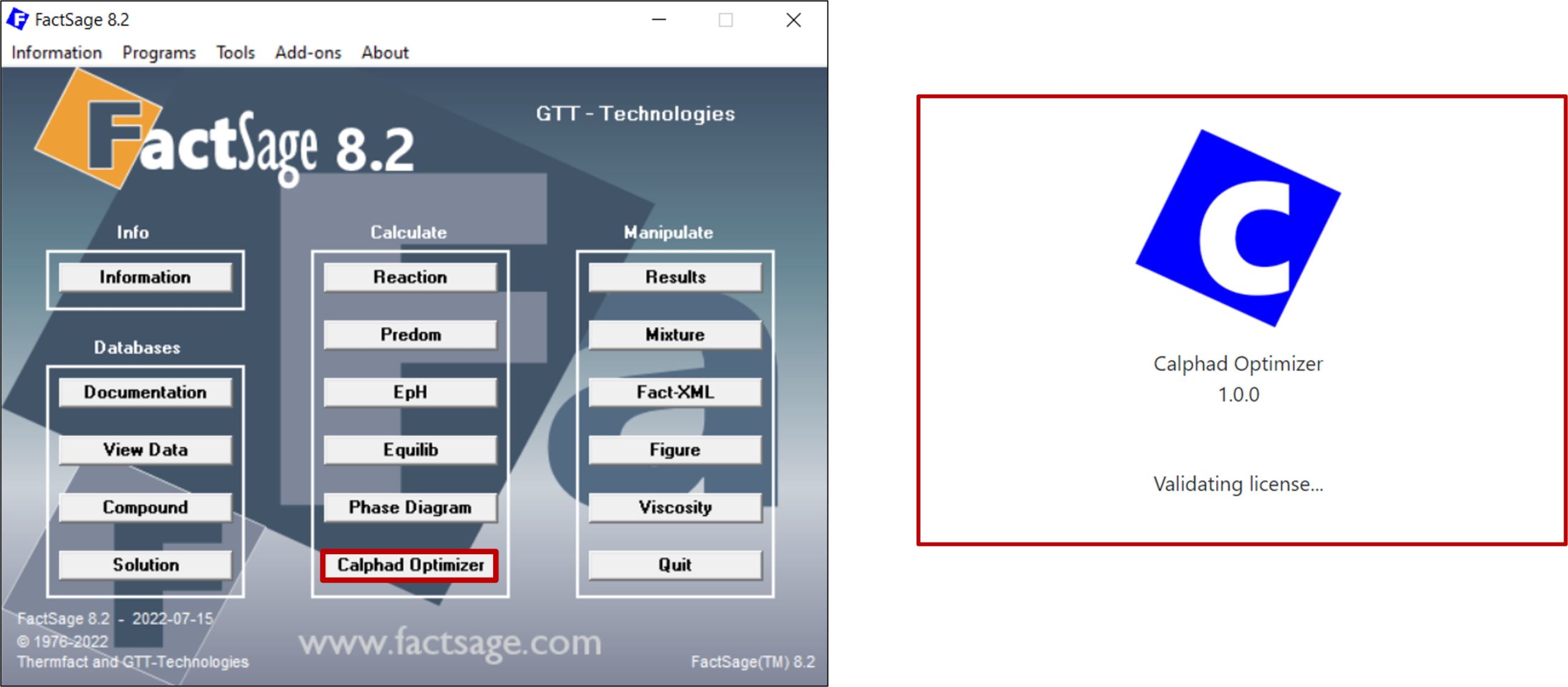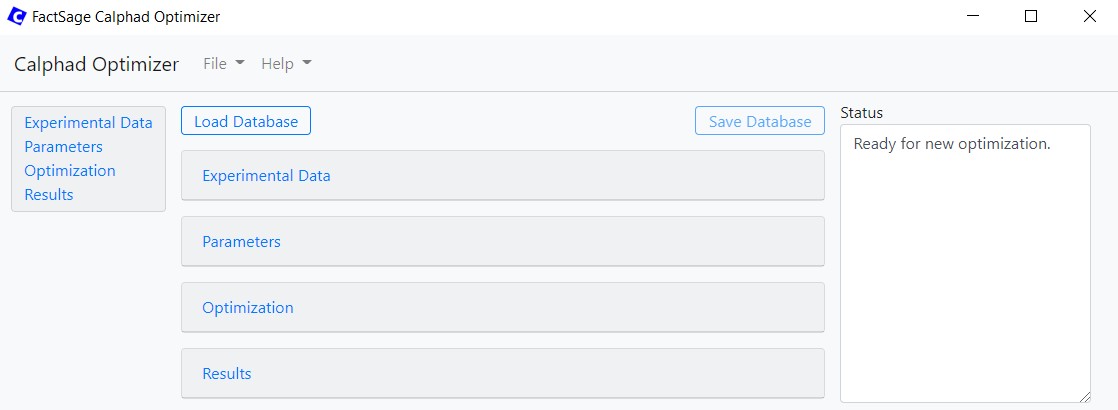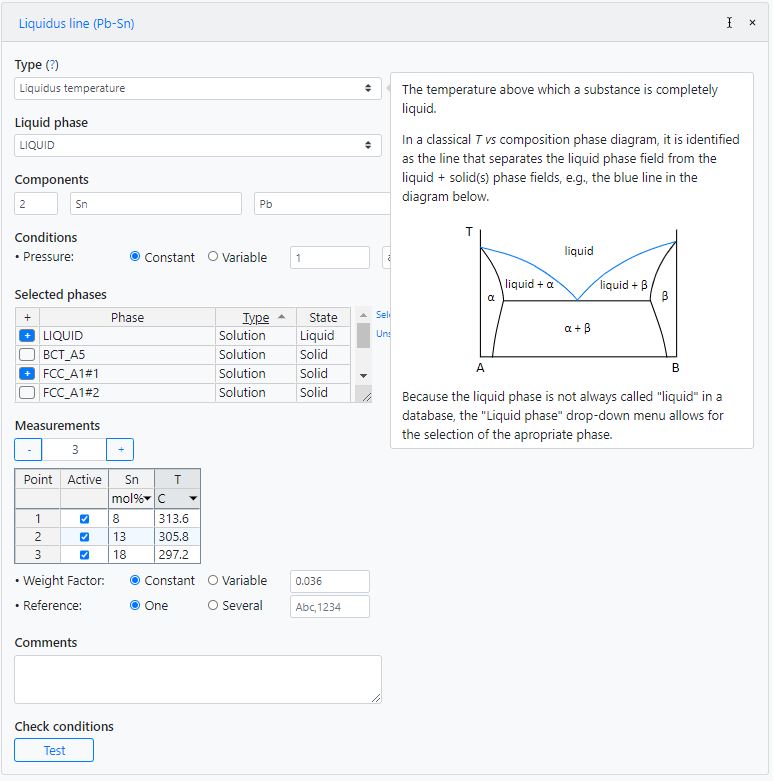The latest FactSage release, FactSage 8.2, comprises a completely new tool to facilitate the development of thermodynamic databases based on the Calphad methodology – the Calphad Optimizer (Figure 1).

Figure 1: The new Calphad Optimizer in FactSage 8.2.
The goal of database development is to derive a set of self-consistent thermochemical parameters that allow the optimal reproduction of known experimental data. For this, the error sum describing the deviation of the calculated values from the different experiments is minimized by changing user-selected database parameters.
The Calphad Optimizer relies on an intuitive interface with a user-friendly modular workflow making database development easy to learn for beginners (Figure 2).

Figure 2: Graphical user interface highlighting the modular workflow with the individual sections: Experimental data, Parameters, Optimization, Results.
The input of experimental data is facilitated by various pre-defined recipes tailored for the input of liquidus and solidus temperatures, enthalpy increments and heat of mixing data. Besides, a more general, multi-purpose recipe enables you to implement nearly all other experimental data not covered by the tailored recipes. All this is supported with in-place help and extensive documentation. An example is given below for the input of liquidus temperatures in the Pb-Sn system (Figure 3).

Figure 3: Liquidus temperature recipe with three experimental datapoints on the liquidus line of the Pb-Sn system.
With the Calphad Optimizer, one has access to almost all thermochemical models in FactSage. Two different optimizers are included in the program. The NOMAD (Nonlinear Optimization by Mesh Adaptive Direct Search; visit https://www.gerad.ca/en/software/nomad/ for more information) optimizer has near-zero computational overhead and therefore allows scanning of wide parameter ranges with brute force. Besides, a chain of individual Gaussian processes, as a sophisticated algorithm that is frequently applied for Machine Learning applications, can also be applied for optimization. In each Gaussian process, the parameters are optimized while between the processes, the pre-defined parameter boundaries are shifted around the optimum of the previous process. Consequently, the Chain of Gaussian processes can even find the optimum beyond pre-set parameter boundaries.
During and after the optimization the program provides valuable feedback giving the user full control over the optimization process. This includes:
- Status box: live feedback about key optimization parameters, e.g. best current iteration, best error, failed iterations & elapsed time
- Results table: summarizing the error contributions of each individual experimental data group and point
- Various optional optimization progress charts to monitor the optimization live
- Automatically generated plots to compare the measured (experimental data) and the calculated values for each experimental group
- Automatically generated plots depicting the error vs. value behavior for each optimization parameter to assess the parameter sensitivity.
The following video gives an example for the optimization in the Pb-Sn system:
We are continuously improving our software and implementing new features. Regular releases, independent of the FactSage releases, are planned to make sure you benefit from our latest developments. The next release is already planned for October 22 containing new cool features!
Do you have any questions, suggestions and/or feedback?
We are happy to hear from you via E-mail to calphad@factsage.com or via our support ticket system (https://support.gtt-technologies.de).
